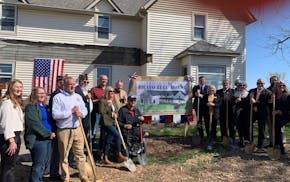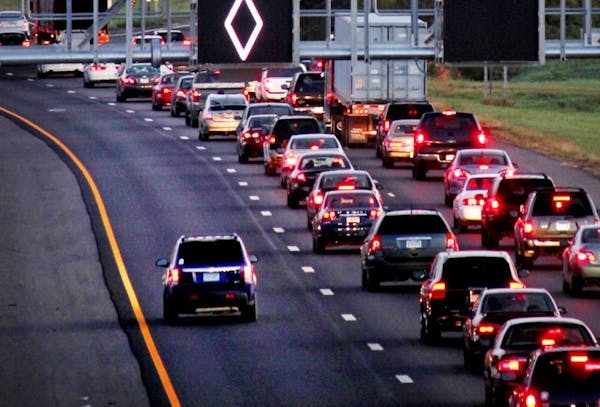The Minnesota Department of Transportation is expanding new technology across the metro area to better identify drivers illegally using MnPass freeway lanes, with the goal of making the system operative by the end of the year.
"We are serious about enforcement," said Brian Kary, MnDOT's director of traffic operations. "It's really a better tool to decipher whether there is a violator or not."
MnDOT plans to spend $370,000 this fall to install flashing beacons and tag readers along interstates 35W, 35E and 394 to help state troopers identify carpool lane cheaters.
Carpool lanes are free during morning and afternoon rush periods — 6 to 10 a.m. and 3 to 7 p.m. on weekdays — for vehicles with two or more occupants, as well as buses and motorcycles. Drivers who are alone in the car must pay a toll to use them.
State officials estimate that about one in six motorists using the toll lanes in 2019 were flouting the law. Paying customers complained, saying that more vehicles in the special lanes slowed traffic and defeated the purpose of congestion relief.
That led to a MnDOT pilot program during the past year trying out the new technology on I-35W at Hwy. 13 and County Road 42 in Burnsville and on I-35E at Arlington Avenue in St. Paul. It worked so well that the agency is installing 24 sets of beacons at 19 new sites across the metro area, said MnPass spokeswoman Sue Gergen.
Here's how it works: As a driver passes a checkpoint, an antenna seeks to read a MnPass tag. If a driver has a valid tag, a blue light flashes; if no tag is detected, an amber light flashes and a trooper must visually determine whether the vehicle has only one occupant. The trooper can then check to see if the driver has a valid tag and whether it was set to allow MnDOT to collect tolls. If the driver doesn't have a tag or has it turned off, they may get a ticket and owe a fine of up to $300.
"It gives an indication that there isn't a transponder in that car. It helps in that aspect, and it helps because we are not stopping cars we don't have to," said Lt. Paul Stricker of the State Patrol, who leads a team of eight troopers enforcing the MnPass lanes.
Stricker said the system is particularly helpful during winter, when darkness makes it harder to see inside a vehicle. When troopers get a flashing amber light, he said, "then we can go for further investigation and make a stop."
Neither Kary nor Stricker had any evidence that beacons at the test locations were a deterrent, "but we hope it would be," Kary said. "We hope [solo] drivers would think twice about using the lane."
The new enforcement beacons include 10 on I-35W south of downtown Minneapolis, eight on I-394 and six on I-35E. Beacons will be active in 19 locations, with beacon sets at five sites monitoring both northbound and southbound traffic.
MnDOT also plans to install the beacons on I-35W between Roseville and Lino Lakes when MnPass lanes open there in fall 2021.
"This is definitely a tool in the tool belt," Stricker said. "They are there so people obey the law."
With the onset of the coronavirus this spring, traffic levels in the metro area declined and so did MnPass lane usage.
The number of trips taken each day by solo drivers who pay a toll dropped by 86% between March and mid-June, according to MnDOT data. From March through August, troopers issued 1,069 citations, compared with 3,574 during the same six-month period in 2019.
Even with fewer vehicles on the roads, however, the patrol seems to be catching its fair share of MnPass scofflaws. On a recent Wednesday morning, troopers issued 15 citations, Stricker said.
Tim Harlow • 612-673-7768
Protesters briefly clash at dual pro-Israel, pro-Palestinian rallies at the University of Minnesota

Defense attorneys in Feeding Our Future trial cast doubt on FBI's meal fraud investigation

Overdose deaths spike after incarceration, but Minnesota jails lack treatment

